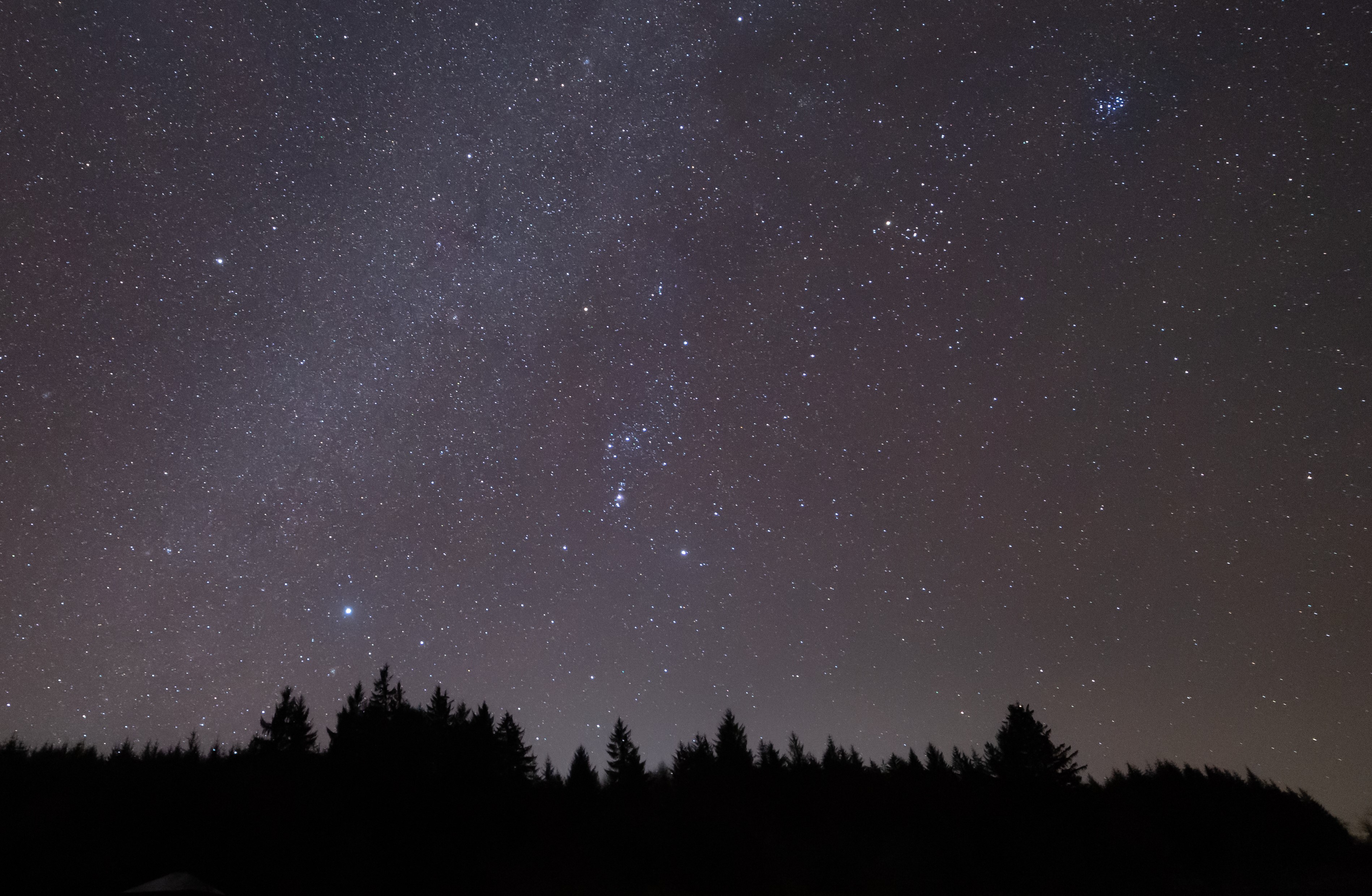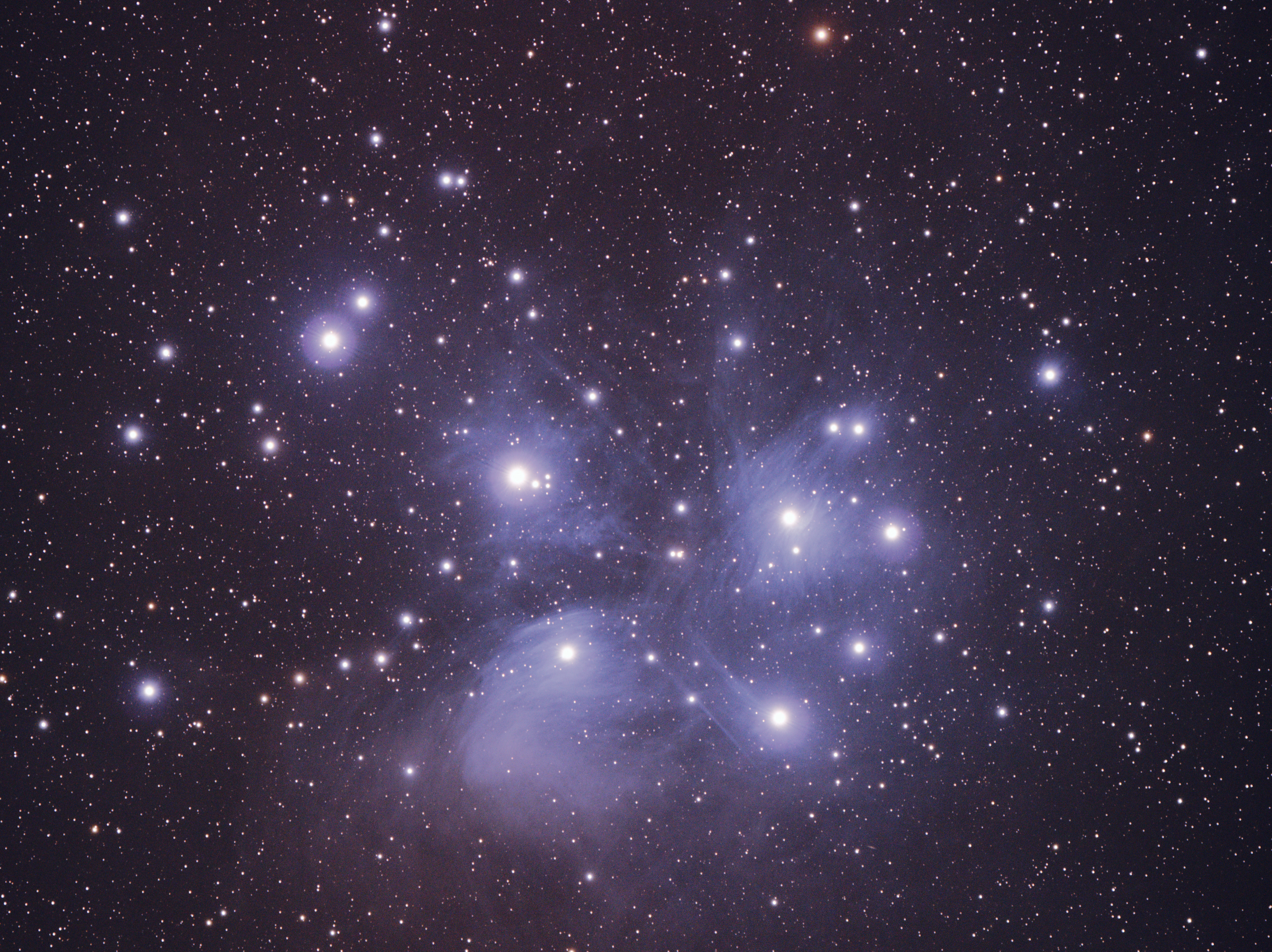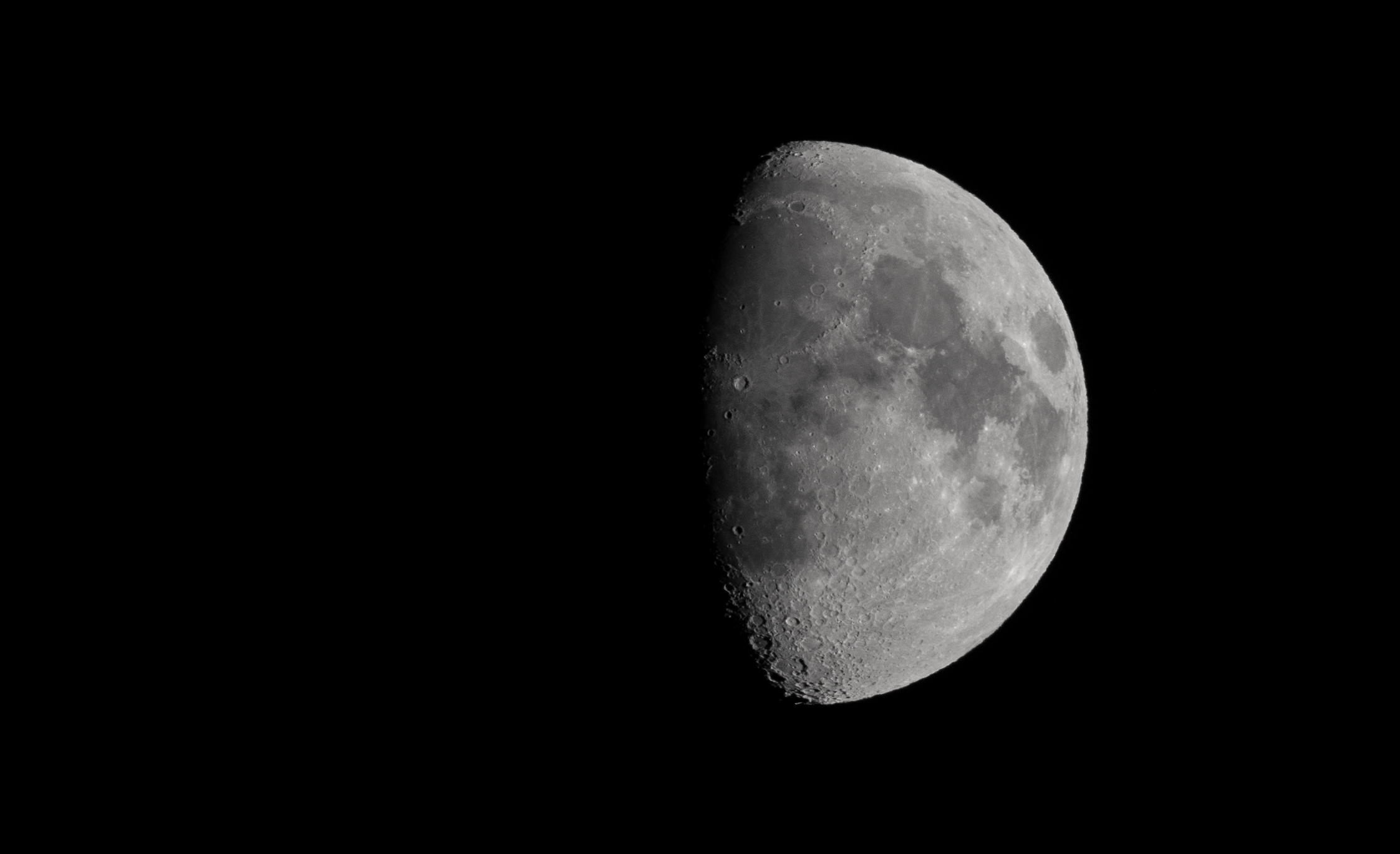
The temperatures might be dropping, but some of autumn’s distinctive celestial sights are starting to rise higher in the night sky, providing plenty of reasons to wrap up warm and spend some time under the stars this month.
The return of the winter constellations
Orion is probably the most recognisable of all the constellations, rising in the east around 10pm this month. Named after a hunter in Greek mythology, the bright stars Bellatrix and red super-giant Betelgeuse form the shoulders of the figure in the night sky.
At 10 million years old, Betelgeuse is a relative youngster compared to our 4.5 billion-year-old Sun, and yet it has already burned through much of the fuel at its core. Once the fuel is depleted, Betelgeuse will reach the end of its life in an enormous stellar explosion called a supernova, an event that is expected relatively soon in astronomical terms, likely in the next 100,000 years. Betelgeuse is several hundred times larger than our Sun, and is so big that if you put it at the centre of our Solar System, it would completely engulf the planets out to the orbit of Jupiter!
One of the most distinctive parts of Orion is the three-star belt and bright sword. While the sword looks like it is made up of stars, if you have binoculars, or can get away from sources of bright light, you may be able to make out that the sword is actually a more fuzzy patch of light. This is an enormous nebula, a large cloud of gas in which scientists have observed new stars and planetary systems being formed.
See if you can spot Orion this month, and we’ll take a closer look at this constellation, and some of the hidden features within it, over the coming winter months when Orion will be at its highest in the night sky.
The Pleiades star cluster
Another distinctive feature of our autumn skies is the star cluster known as the Pleiades, the Seven Sisters, or Messier 45. This sits in the constellation of Taurus, and is visible even from light-polluted city skies, rising in the east soon after dark this month, and sitting high in the south at around midnight.
At 100 million years old, these hot, blue, luminous stars are travelling together around our galaxy, the Milky Way, at a distance of 440 light years from Earth. The stars in this cluster are currently passing through a large nebula that is drifting around our galaxy, illuminating the gas as they do so. This is a phenomenon known as a ‘reflection nebula’, a secret that can only be revealed by super-dark skies, optical assistance (such as binoculars or a telescope) or long-exposure photography.

Did you know: You may be able to spot the International Space Station (ISS) as it passes over the UK this month, at an altitude of over 400 kilometres (250 miles). The ISS orbits the Earth at over 27,700 kilometres (17,200 miles) per hour, completing one orbit very 92 minutes, and with the astronauts on board experiencing 15 – 16 sunrises and sunsets every day!
| Best ISS passes over UK (times may vary slightly depending on location) | |||
| Date | Time | Where will it come from? | Where will it head? |
| 22-Nov | 18:38 | SW | S |
| 23-Nov | 17:50 | SSW | ESE |
| 24-Nov | 18:39 | WSW | SW |
| 25-Nov | 17:51 | SW | E |
| 26-Nov | 18:40 | W | W |
| 27-Nov | 17:52 | WSW | E |
| 28-Nov | 17:04 | WSW | ENE |
| 28-Nov | 18:41 | W | WNW |
| 29-Nov | 17:53 | W | ENE |
| 30-Nov | 17:05 | W | E |
Data adapted from heavens-above.com
Mars is still shining brightly, and is at its highest in the southern sky at around 10pm. The distance between Mars and our planet is starting to increase again, having passed the closest point in their orbits around the Sun (or “opposition”) last month. Mars has already started to reduce in brightness, and while it will dim further throughout November, it will still be a striking sight, especially on the evening of 25 November, where it will be in close conjunction with the Moon.

Early risers will still see Venus blazing in the east before sunrise, with Venus having its own conjunction with the moon on 12 and 13 November. Look east early on the morning of 13 November and sharp-eyed observers may be able to catch a rare glimpse of the planet Mercury. The innermost planet, the 5% illuminated sliver of Moon and brightest planet Venus will form a line in the sky. The planet Mercury’s close orbit around the Sun means that it is only ever visible for a few minutes before sunrise, or after sunset, when the sky isn’t fully dark.
(Caution: If you’re hunting for Mercury (or other celestial objects) close to sunrise or sunset, don’t be tempted to look at the Sun, especially if using binoculars, a telescope or a camera. It could damage both your eyesight and your equipment).
Jupiter and Saturn are bright enough to see in the southern sky soon after sunset. As it gets dark on the evening of 19 November, look to see the Moon sat just underneath the two gas giants. They’ll be fairly low to the horizon, so try to find somewhere with an unobscured view to the south.
Jupiter – Saturn Conjunction
Anyone who has been lucky enough to have cloud-free skies through October might have noticed that from our perspective here on Earth, Jupiter and Saturn continue to move closer to each other in the sky. They head towards a rare and spectacular conjunction in December. Don’t miss next month’s blog to find out more information!
Meteor shower
For those of us that spent the peak of last month’s Orionid meteor shower hoping for a break in the clouds, you’ll be glad to hear that November provides us with another meteor shower, the Leonids.
This meteor shower will be visible throughout November, and will peak around the 17th of the month. These meteors, or ‘shooting stars’ are small fragments of rock and dust entering Earth’s atmosphere at over 70 kilometres (45 miles) per second, heating up rapidly as they do. This debris is left over from the trail of Comet 55p/Tempel-Tuttle, which orbits the Sun every 33 years, and will return to the inner Solar System again in 2031.
This meteor shower coincides with the new Moon this month, and the darker skies that provides should enable you to see more shooting stars. It’s anticipated that there’ll be around 15 – 20 meteors per hour, so wrap up warm and spend some time outside looking up!
Unfortunately for observers in the UK, we won’t get to see the penumbral lunar eclipse (where the Moon moves through the faint, outer part of Earth’s shadow) at the very end of the month. It begins just moments before the Moon sets below the horizon on the morning of 30 November.
Competition time: We may not get to see the lunar eclipse, but we’d still love to see your photos of the Moon. Send us your best shots this month (@spacegovuk) and we’ll retweet our favourites.
Wishing you clear skies!
2 comments
Comment by Molly posted on
Hi there.
Been scrawling the internet in vain for some qualified information on which night in November exactly the Pleiades will reach their highest point (Uk location). You wouldn't have an answer to this question, would you? Thanks ?
Comment by UK Space Agency posted on
Hi Molly, great question!
Objects in the night sky technically reach their ‘peak’ when they cross the meridian (i.e. directly due south) at midnight. For the Pleiades this month, that’s around 20 November.
The Pleiades reaches its highest point in the southern sky consistently over the next few months, so the peak height doesn’t change, only the time that it reaches that peak. So tonight for example, Pleiades crosses the meridian around midnight, by Christmas it’ll be highest at 10pm, by the end of January it’ll be 8pm, and by February, it’ll still be daylight when Pleiades is highest.